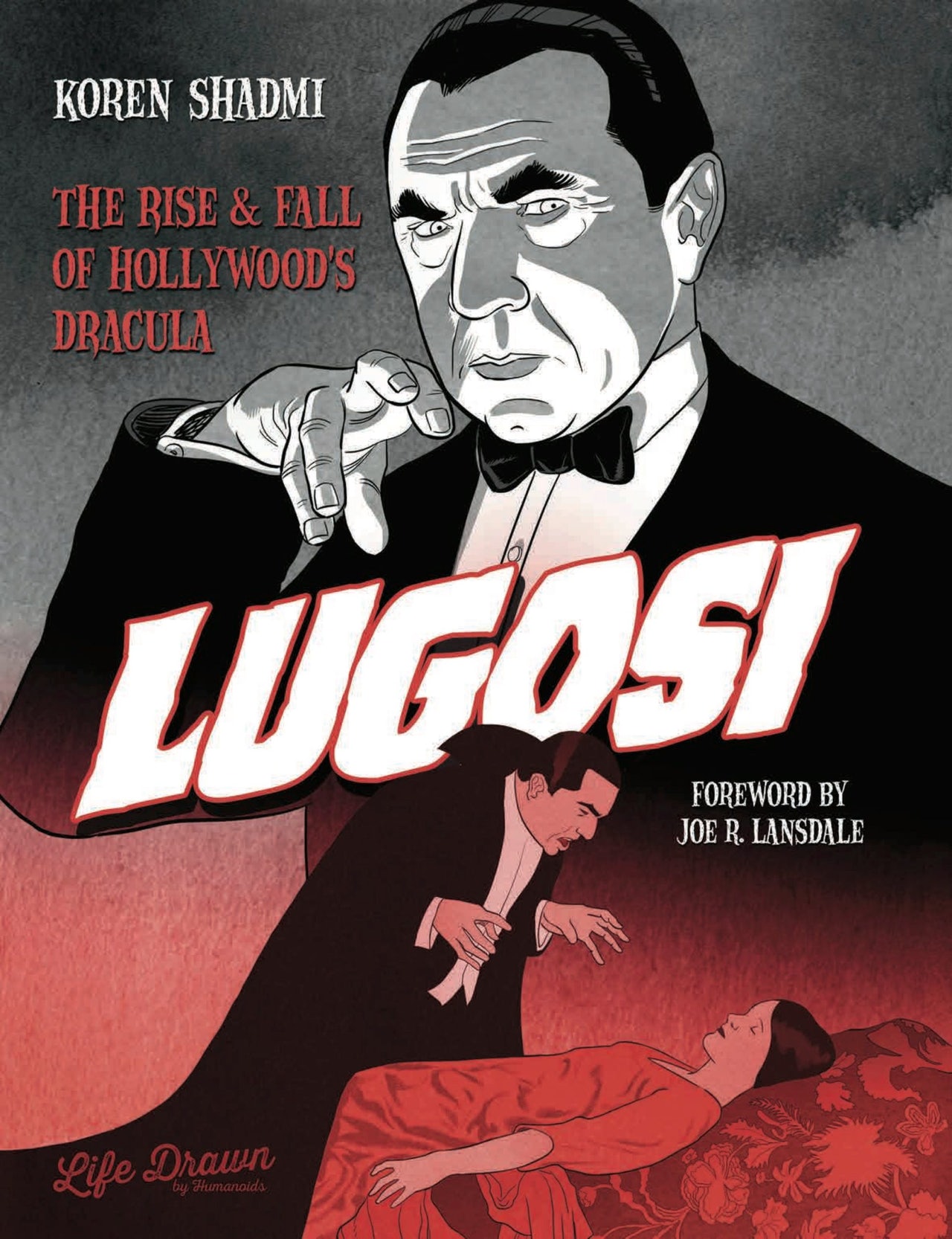From illustrator and cartoonist Koren Shadmi (The Twilight Man: Rod Serling and the Birth of Television) comes graphic biography Lugosi: The Rise and Fall of Hollywood’s Dracula, an exploration of the screen legend’s life in the same rich, black-and-white tones that shaded his most famous on-screen performance. As the book’s title suggests, just because Lugosi was a star — forever associated with Bram Stoker’s creation Count Dracula, as seen in Tod Browning’s 1931 Universal classic — that doesn’t mean his life was charmed.
In an exclusive statement to Gizmodo, Shadmi explained more about his choice of subject. “Bela Lugosi was born Bela Blasko in 1882 in Lugos, Hungary. He would later change his name to that of his hometown, which (believe it or not) was in the edges of Transylvania. In his early 20s, Lugosi was an activist and proponent of socialism, but after the Hungarian socialist government was toppled, he had to flee his country. He eventually made his way to New York, where he slowly learned English and made a living performing in local Hungarian theatres. In 1927, Bela would get his first real break as the lead in the Dracula play. The play was mounted on Broadway after as successful run on London’s West End. As a publicity stunt, nurses and doctors were hired to stand at the back of the theatre, to tend to those who might faint or suffer a heart attack.”
He continued, “Lugosi is most recognised for his role as the iconic Count Dracula in the 1931 Tod Browning film. With an incomparable talent, Lugosi created a complex and nuanced monster, one that is both a seductive gentleman and a hideous demon. His performance has forever cemented his position as an icon in the history of cinema. The production of Dracula was somewhat disorganized and director Tod Browning showed little interest in directing the film. None of the cast members took filming seriously, except for Bela Lugosi. He was witnessed strolling up and down the set with his cloak wrapped around him and saying, ‘I am Dracula.’ This was Bela’s own method of psyching himself up and building his concentration to stay in character.”
Check out the cover of Lugosi below, followed by an exclusive excerpt that depicts Lugosi’s casting in Dracula — a career-defining moment that brings into sharp relief how fame can be transformative in both positive and very negative ways.
 Image: Humanoids
Image: Humanoids
 Image: Humanoids
Image: Humanoids
 Image: Humanoids
Image: Humanoids
 Image: Humanoids
Image: Humanoids
 Image: Humanoids
Image: Humanoids
 Image: Humanoids
Image: Humanoids
Excerpt from Koren Shadmi’s Lugosi: The Rise and Fall of Hollywood’s Dracula reprinted by permission. Copyright Humanoids.
“Within 48 hours of its opening, Dracula had sold 50,000 tickets, building a momentum that culminated in a $US700,000 ($963,970) profit, making it Universal’s biggest hit for 1931. Surprisingly there was no immediate sequel,” Shadmi also told us. “MGM stepped in and cast Lugosi as Count Mora in a knock off film Mark of the Vampire in 1935. Lugosi would only play the part of Count Dracula one more time in his film career. You may not know it, but Lugosi was originally cast to play the monster in the iconic 1931 Frankenstein film. A test reel, starring Lugosi as the Monster and directed by Robert Florey, was filmed, but the footage has not been seen since and is considered lost. Lugosi was ditched at the 11th hour and replaced by none other than Boris Karloff. Years later, Lugosi was actually cast to play the monster in one of the sequels: Frankenstein Meets the Wolf Man.
“Lugosi was on my shortlist for possible graphic novel subjects for a long time, Shadmi said of the idea behind the book. “My interest was piqued when I listened to an episode of a history podcast that was dedicated to his life. I couldn’t believe how dramatic it was, I was a little familiar with his later years from watching Ed Wood but I had no idea he had such a rollercoaster of a life story. I knew he would make for a perfect subject for a graphic novel.”
Koren Shadmi’s Lugosi: The Rise and Fall of Hollywood’s Dracula is out September 28. Find where to pick up a digital or softcover copy here.
Wondering where our RSS feed went? You can pick the new up one here.

